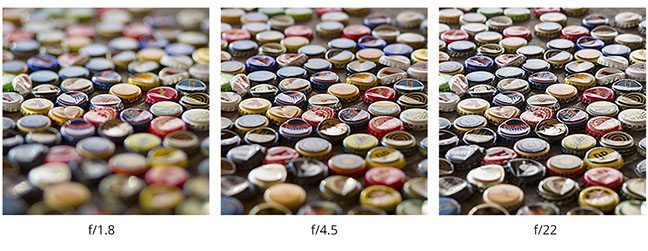
Even if you use the same F-stop and camera settings your exposure values will be different on different lenses, ever so slightly. The issue with F-stops on stills lenses is as you change between lenses and different focal lengths, the amount of light let in through the lens changes. The size of the opening) and the focal length of the lens (like 35, 50, or 85mm). Without getting too technical, an F-Stop is the ratio between the diameter of the aperture in the lens (a.k.a. T vs F stopsĪnother major difference between stills and cinema lenses are T and F Stops. This makes changing between lenses way easier and faster when using rails, matte boxes and follow focus systems. They also have the same sized barrel and threading for add-ons like neutral density or diffusion filters. Next, they are usually all the same physical size no matter which focal length you use, which means the gears for changing aperture, zoom, and focus are in the same place. First off, a set of cinema lenses from the same company is created together and the glass is coated to make sure all of them are color matched. Similarity of Lens SetsĪnother benefit of filming with cinema lenses comes when you’re shooting with multiple lenses. Inside this Canon Cinema Prime lens is an 11 blade iris, which leads to rounder bokeh in a blurred background and rounder lens flare shapes.Ī Canon L-Series lens only has 8 aperture blades, leading to less round, or even octagon shaped bokeh or lens flare. Bokeh Shape & SizeĪnother feature of cinema lenses is they have more blades on the iris that opens and closes as you change aperture.

This isn’t the case with a still lens and you’ll need to re-focus ever so slightly after zooming in or out. One more focus related feature is that if you’re using a zoom cinema lens, it will be parfocal, which means as you zoom in and out, the focus distance will stay exactly the same. On a cinema lens, you’ll get less or no focus breathing on the edges of your frame when changing focus. If you watch the edges of your frame while you change focus on a still lens, you’ll see more or less visible in the frame, which can be quite distracting while racking focus between two objects.

Focus BreathingĪnother focus related feature of a cinema lens is they typically have less focus “breathing”, or changes in how much is in your angle of view. This makes it much easier to get critical focus when preparing a shot, which is getting more and more important when filming in resolutions like 4K, 8K, and beyond.
The focus ring on a cine lens also has built-in hard stops at infinity and the closest distance it can focus. On a cinema lens, you may get two or three hundred degrees of rotation. On a still lens you might only have around a quarter of a turn on the barrel to rack focus. A cinema lens on the other hand is completely analog, with markers on the side for the focus distance.Ī cinema lens also has a much larger focus “throw”, or how much you have to turn the focus ring to change focus. Some still lenses from Sony or Zeiss use fully electronic “focus by wire” systems, where the faster you move the focus ring, the more it changes focus. Pulling focus on a cinema versus a still lens is way more precise and smoother too. to smoothly change focus or aperture with either a wheel next to the lens or a wireless remote system, which is most helpful when using a gimbal or a drone. The gears on the side of a cinema lens allow the addition of a follow focus system for you or a 1st A.C. Some still lenses like the Sony G-Masters now allow you to de-click the aperture ring though.
#F STOP COMPARISON MANUAL#
With a cinema lens you can get more precise, manual changes in aperture and do so smoothly, like when you’re going from a bright outdoor setting to a dim indoor environment. You change it in increments of one third an f stop at a time.

The opening through which light reaches your camera’s sensor, or aperture, on most still lenses can usually only be controlled electronically by the camera you’re using. The first thing you’ll probably notice other than how much larger cinema lenses are is how they’re geared for both pulling focus and changing the aperture. There are a lot of reasons you’d rent or buy a cinema lens instead of filming videos with a still photography lens. Using a larger, more expensive cinema style lens on your camera when you're filming will do more than just get you a ton of likes on your behind the scenes Instagram photos.


 0 kommentar(er)
0 kommentar(er)
